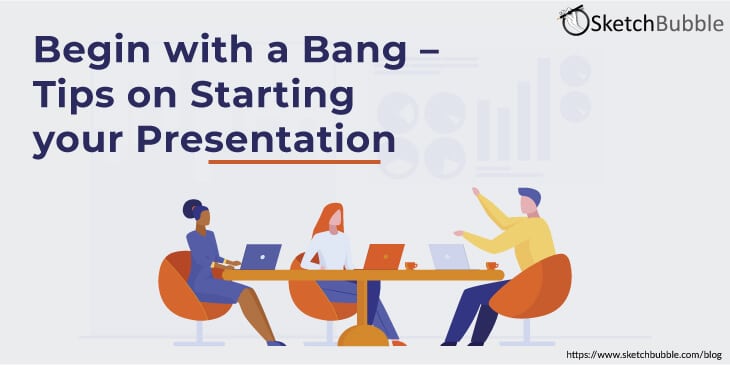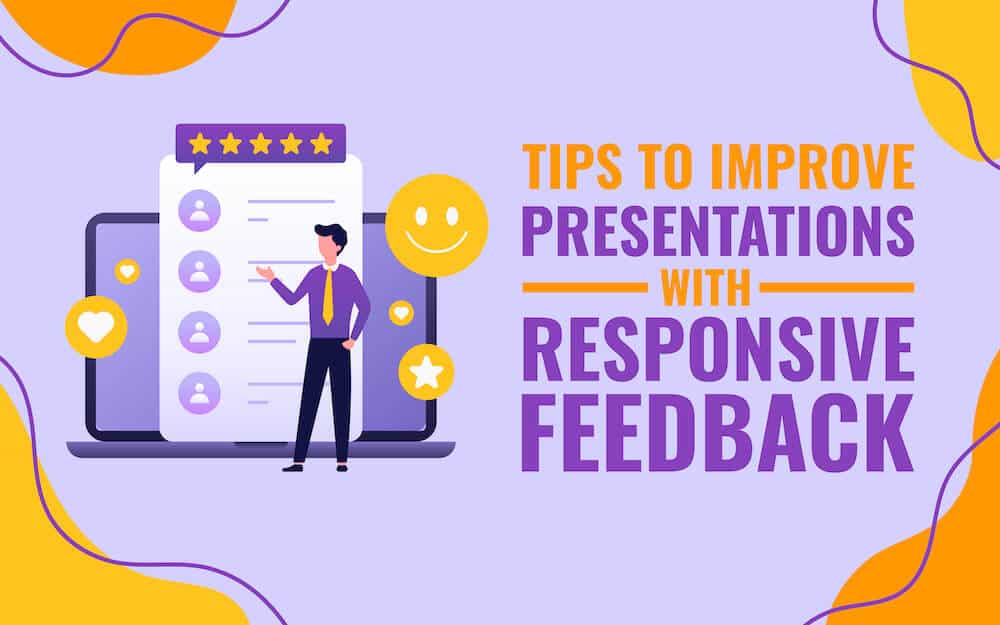
Agonizing over how to begin that presentation with a bang?
Well, yes, you do need to have an opening that will put you firmly in the pilot’s seat to helm the presentation effectively. You need to command attention in order to build engagement. How do you go about doing that? You need to be, smart, well-prepared and exuding confidence.
Considering that your audience are busy people with their own to-do lists clamoring for attention in the not-so-deep recesses of their minds, you want to remind them that being at your presentation is to their advantage and its benefits would outweigh investing their time elsewhere. Beginning with a line like, ‘Thank you all for coming here today. I know how busy you all are and I appreciate the time you have taken out to listen to me…,’ is a losing bid. Not only do you come across as being ingratiated by their presence, you sound as if you do not deserve their time. In addition, you are reminding the audience that there are so many things that they could have been doing rather than attending your presentation. If, however, you began with, ‘Thank you all for joining me today in this session! I am so glad and excited at this opportunity to share new information/techniques that will certainly put our Company on the big map in the coming year,’ you are likely to have won half the battle already.
Why must you start with a bang?
For obvious reasons: to grab and hold their attention. You have a message to communicate and you can do so effectively if your audience is attentive, alert and receptive. Your opening actions and statement must, therefore, be geared to fulfill these requirements. Not only must you portray enthusiasm and dynamism, you must radiate energy that charges the atmosphere sufficiently to keep people interested.
Beginning your presentation with a relevant and stimulating less than a minute-long video with a message, an image with a thoughtful caption, a forceful quotation, an anecdote, a prop, or action to draw all eyes to you is the perfect opening. In a TED talk a few years ago, while talking about his philanthropic work, Bill Gates touched upon the topic of malaria menace in many developing countries across the world. His pitch to capture audience’s attention? Amidst the distinguished gathering of the wealthy, he opened a jar containing mosquitoes and released them into the hall with the comment that it shouldn’t just be the poor who experience the disease! (He clarified a minute later that the mosquitoes were free of the microbe that causes malaria).
Once you have managed to make all the right moves and started with a bang, spend a minute to introduce yourself and establish your credentials. Be cautious to not misuse this time to unduly praise yourself or toot your own horn; rather, stick to the basics – your qualifications and experience that has allowed you to address the audience. Your introduction is meant to inspire confidence in the audience so they recognize you as a valid authority regarding your presentation. They would appreciate knowing why they should listen to you.
Next, introduce the topic. Keep it brief; just a few sentences more than the topic statement. Cut to the core – the reason or purpose – of the presentation. Whet their interest without giving away too much. Anticipating something more will keep the audience engaged and on the lookout for those key points that form the backbone of your presentation. What better way to keep them alert and sustain their interest?
Now that you have the undivided attention of the gathering, be sure to involve the audience as not merely participants, but also partners in your presentation. You can do this by laying out clearly what is in it for the audience. Will they have learnt a skill? Will they end up armed with statistics that will help them formulate strategies or interventions? Will they be better informed to guide their juniors? Will they update and enhance their current knowledge? Will they find solutions to work related problems? You have to draw the audience in with a promise of betterment. Spell it out clearly so they know you are on their side. Also, giving them context by briefly outlining the big picture will help put them on the same page as you. Give them an overview of the purpose, the benefits, and the bottom line. Establishing a foundation in this way will help scaffold new knowledge on to the old – a way to ensure that learning is actually taking place in context that they comfortably understand and can relate to.
Establishing a rapport with the audience requires their participation. You could, at this point, make a statement to start the ball rolling. Invite comments on your statement and guide the discussion. Build on their participation and guide it to dovetail neatly with your presentation. This requires skill, practice and confidence, not to mention a sharp mind. If you are persuasive without being preachy, people will be more accepting of your message and more willing to apply the knowledge or skills you give them.
In the first few minutes of your presentation, you are aiming to create a positive upbeat mood, establish credentials, gain respect, grab attention and capture interest. It is very important to create and nurture the right ambiance. Enthusiasm, energy and excitement are infectious and help forge a great bond. Prepare yourself to welcome the audience and provide them with a productive, effective and fulfilling learning experience. Practice, rehearse and be confident.




Great summary of how a presentation should start and continue!!
Waiting for an addendum that addresses how to end the presentation in a way that will make your key message stick in the audience’s minds.
I covered that topic on linkedin – https://www.linkedin.com/pulse/20140912125131-58340817-the-end-is-near-are-you-prepared